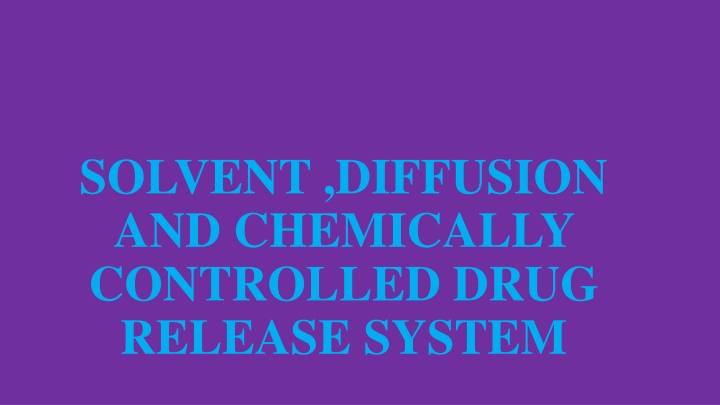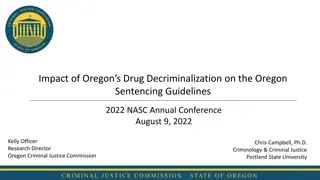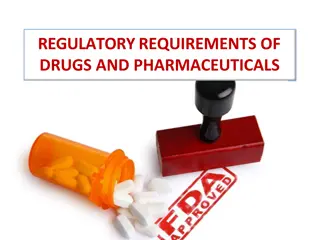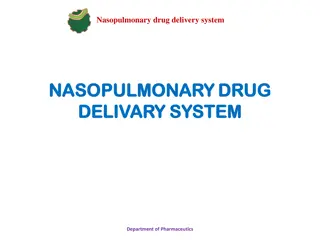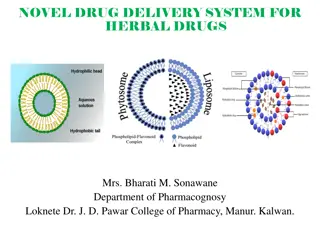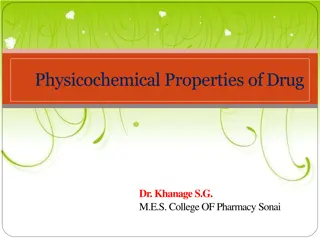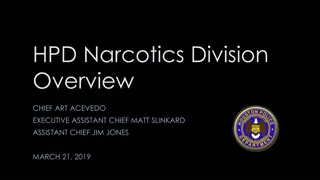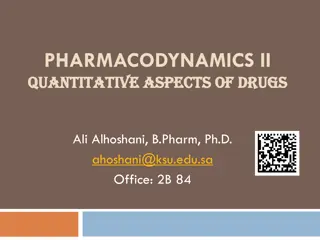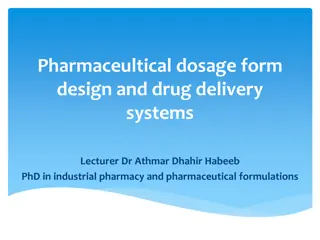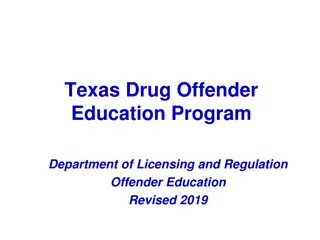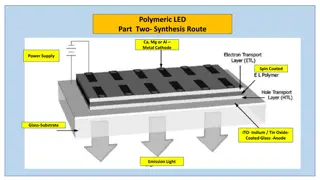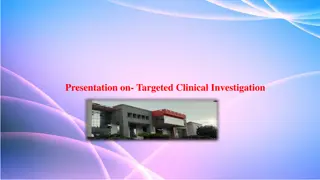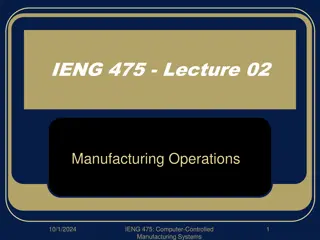Polymeric Controlled Drug Delivery Systems
Polymeric controlled drug delivery systems play a crucial role in regulating drug release through diffusion, solvent penetration, and chemical mechanisms. These systems include diffusion-controlled, solvent-controlled, and chemically-controlled devices, each operating based on specific principles. Solvent-controlled systems release active agents as solvents penetrate the device via osmosis or swelling mechanisms. Swelling-controlled devices, on the other hand, involve water penetration into the matrix leading to swelling and subsequent drug diffusion. Factors like matrix design, drug composition, and uptake rate of water influence the release rate. Despite advantages like biocompatibility and drug molecule permeability, these systems may exhibit drawbacks such as variable release patterns and reduced tensile strength upon swelling.
Download Presentation

Please find below an Image/Link to download the presentation.
The content on the website is provided AS IS for your information and personal use only. It may not be sold, licensed, or shared on other websites without obtaining consent from the author.If you encounter any issues during the download, it is possible that the publisher has removed the file from their server.
You are allowed to download the files provided on this website for personal or commercial use, subject to the condition that they are used lawfully. All files are the property of their respective owners.
The content on the website is provided AS IS for your information and personal use only. It may not be sold, licensed, or shared on other websites without obtaining consent from the author.
E N D
Presentation Transcript
SOLVENT ,DIFFUSION AND CHEMICALLY CONTROLLED DRUG RELEASE SYSTEM
DRUG RELEASE FROM POLYMERIC SYSTEMS There are three types of polymeric controlled drug delivery systems, these are: 1. DIFFUSION-CONTROLLED SYSTEMS Monolithic (Matrix) devices Reservoir devices 2. SOLVENT-CONTROLLED SYSTEMS Osmotically controlled devices. Swelling-controlled devices 3. CHEMICALLY-CONTROLLED SYSTEMS
SOLVENT- CONTROLLED SYSTEMS
solvent-controlled systems In solvent-controlled systems, the active agent is released as a consequence of controlled penetration of a solvent (water) into the device. Two general mechanism are Osmosis swelling
SWELLING CONTROLLED DEVICES The active agent is homogeneously dispersed in a GLASSY polymer. When the device is placed in aqueous environment, water begins to penetrate in the matrix and swelling takes place. As a consequence, monomer chains relax and the active agent begins to diffuse from the swollen layer.
RELEASE RATE Drug release is a function of rate of uptake of water from the surrounding media and the rate of drug diffusion. Matrix design/composition, as well as drug affect the release rate
EXAMPLE Syncro-Mate-B implant Ethylene glycomethacrylate Hydrogels (Hydron S): For subcutaneous administration of norgestomet Potent progestin
ADVANTAGES/DISADVANTAGES ADVANTAGES: Bio compatibility Good permeability of the drug molecules as the matrix swell DISADVANTAGES: Potential variability in drug release Low tensile strength upon swelling
OSMOTICALLY CONTROLLED DEVICES An external fluid containing a very low concentration of drug moves across semi permeable membrane to a region inside a device where drug is in high concentration. The inward movement of the fluid forces the dissolved drug out of the device through a small orifice.
EXAMPLES ALZA osmotic pumps. ADVANTAGES: Operation independent of active agent properties Ability to deliver macromolecules Constant delivery rates higher than those acheivale by diffusional devices DISADVANTAGES Principal barrier to development Membrane must have an extremely high water permeability to produce an osmotic pressure high enough to achieve useful drug release
DIFFUSION CONTROLLED SYSTEMS
RESERVOIR DEVICES The active agent is surrounded by a nonporous, homogeneous rate- controlling membrane. RELEASE RATE: zero order ADVANTAGE Constant release DISADVANTAGE Possibility of drug dumping Boundary layer effects Complex manufacturing process EXAMPLE: Ocusert
MONOLITHIC(MATRIX) DEVICES The therapeutic agent is intimately mixed in a rate controlling polymer. Active agent may be dissolved or dispersed within the polymer matrix. Release rate: first order ADVANTAGE: simple and convenient preparation. Drug dumping is not a problem. DISADVANTAGE: Variable release rate
CHEMICALLY- CONTROLLED SYSTEMS
Rate of active agent release from the polymer is controlled by a chemical reaction that can be hydrolytic or enzymatic cleavage of a labile bond, ionization or protonation. Drug is covalently attached to the polymer backbone, possibility of targeting,. Drug contained in a core surrounded by a bioerodible rate- controlling membrane. Combine the attributes of a reservoir type device and bioerodibility. Drug is homogeneously dispersed in a polymer, release is controlled by diffusion, by a combination of diffusion and erosion or by erosion as shown in figures. ADVANTAGE: biodegradation and elimination of the device, particularly important for implants
